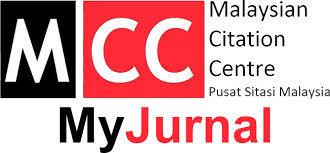A’RAD AL-TA’RIF WA AL-TANKIR AL-BALAGHIYYAH FI AL-HADITH AL-NABAWI (KITAB AL-SALAM MIN SAHIH MUSLIM UNMUZAJAN)
[THE RHETORICAL PURPOSES OF DEFINITE AND INDIFINITE ARTICLES IN HADITH OF THE PROPHET MUHAMMAD (CHAPTER OF AL-SALAM IN SAHIH MUSLIM AS EXAMPLE)
Keywords:
Definite, Indifinite, Rhetorical, Hadith of The Prophet Muhammad, PurposesAbstract
Abstract: Rhetoric is the highest rank of language strength, namely eloquence and good coherence and phrasing. For speech to be rhetoric, it must include eloquent rhetorical methods. To be considerate of rhetorical purposes, the speaker is better to choose the optimal style and the most accurate word to perform the meaning to the fullest. It better to choose the word, and put it in its proper place, it is not enough for the word to be eloquent to make the speech eloquent. This is the eloquent man who chose words and used exquisite and aesthetic sentences, and wherever he was, he was the most eloquent who has been given words which are concise but comprehensive in meaning. The Arabic language has been obediently lovely stood in his hands and has been honored by him rather than other languages. He is the imam of creation - peace be upon him - who made a clay from the art of the language and he formed it in his hands as he wished. This study came to shed light on an aspect of the eloquence and miracle of the Prophet's speech, to stand on its arts, taste its fine style, probe the details of rhetoric, shedding light on an aspect of his eloquence - peace be upon him - and his eloquence, and addressing one of the branches of rhetoric as a sample That indicates all the Intractable to be mentioned. This aspect is the using of definite and indefinite articles of Arabic language and their purposes in the Prophet's hadith. The researcher will make a statement of the concepts of using definite and indefinite articles of Arabic language in his hadiths, their rhetorical purposes, and the statement of the use of these purposes in the Prophet's hadith. The researcher will illustrate the importance of addressing this by studying, in an effort to answer questions such as: What rhetorical purposes are used in the Prophet's Sunnah? How do we understand the prophetic discourse through knowledge of the method of discourse and its rhetorical analysis? The researcher has concluded that the definite and indefinite articles of Arabic language have been frequently contained in the Prophet's hadith, and each was used in different contexts and purposes, such as maximizing, disparaging and limiting them to specific and detailed identification, and in other cases to identify, to reduce, multiply, mention type, etc., each case has been employed to perform specific and clear legitimate purposes indicated by these methods.
References
Al-Qur’an al-Karim.
Al-Fawzan. 1431. Ta’jil an-Nada Sharh Qatr al-Nada. Dammam: Dar Ibn al-Jawzi.
Habannakah. 1996. Al-Balaghah al-‘Arabiyyah. Beirut: Dar al-Qalam.
Al-Himyari. 1999. Shams al-‘Ulum wa Daw’ al-Kalam al-‘Arab min al-Kalam. Beirut: Dar al-Fikr.
Ibn al-Sayyih. 2004. Al-Lumhah fi Sharh al-Mulhah. Al-Madinah al-Munawwarah. A’madat al-Bath al-‘Alami fi al-Jami’ah al-Islamiyyah.
Al-Khalil. 1985. Al-‘Ayn. Baghdad: Dar wa Maktabah al-Hilal.
Al-Mu’ayyad. 1423. Al-Tiraz li Asrar al-Balaghah. Bayrut: al-Maktabag al-‘Asriyyah.
Muslim. t.th. Sahih Muslim. Beirut: Dar Ihya’ al-Turath al-‘Arabiyy.
Al-Nawawi. 1392. Al-Minhaj Sharh Sahih Muslim. t.tp.: t.pt.
Al-Rifa’i. 1980. Asalib Balaghiyyah. Kuwayt: Wakalah al-Matba’ah.
Al-Sayuti. 1988. Mu’tarak al-Aqran fi ‘Ijaz al-Qur’an. Bayrut: Dar al-Kutub.
Al-Sayuti. t.th. Ham’ al-Hawami’ fi Sharh Jam’ al-Jawami’. Mesir: al-Maktabah al-Tawfiqiyyah.













